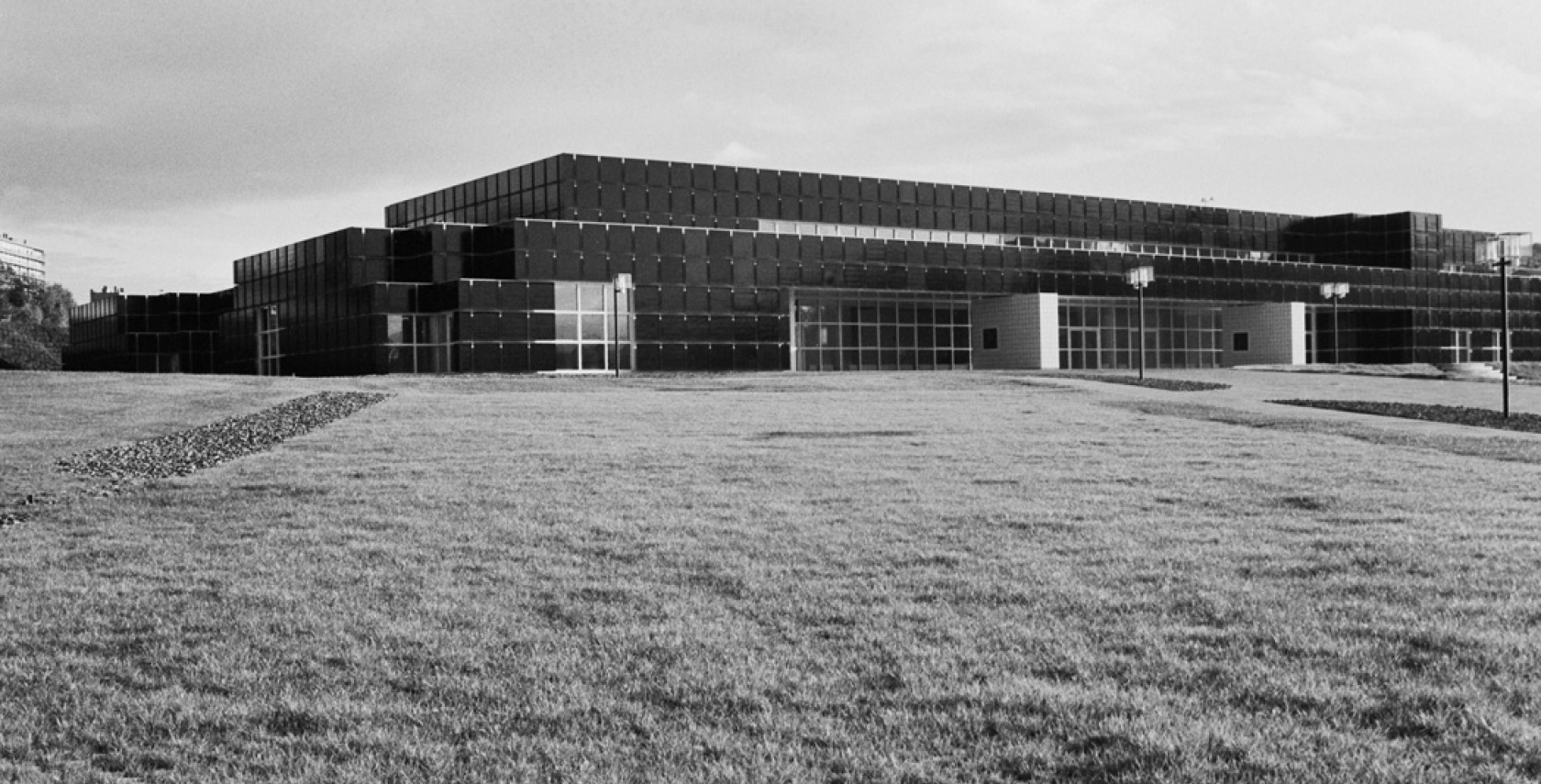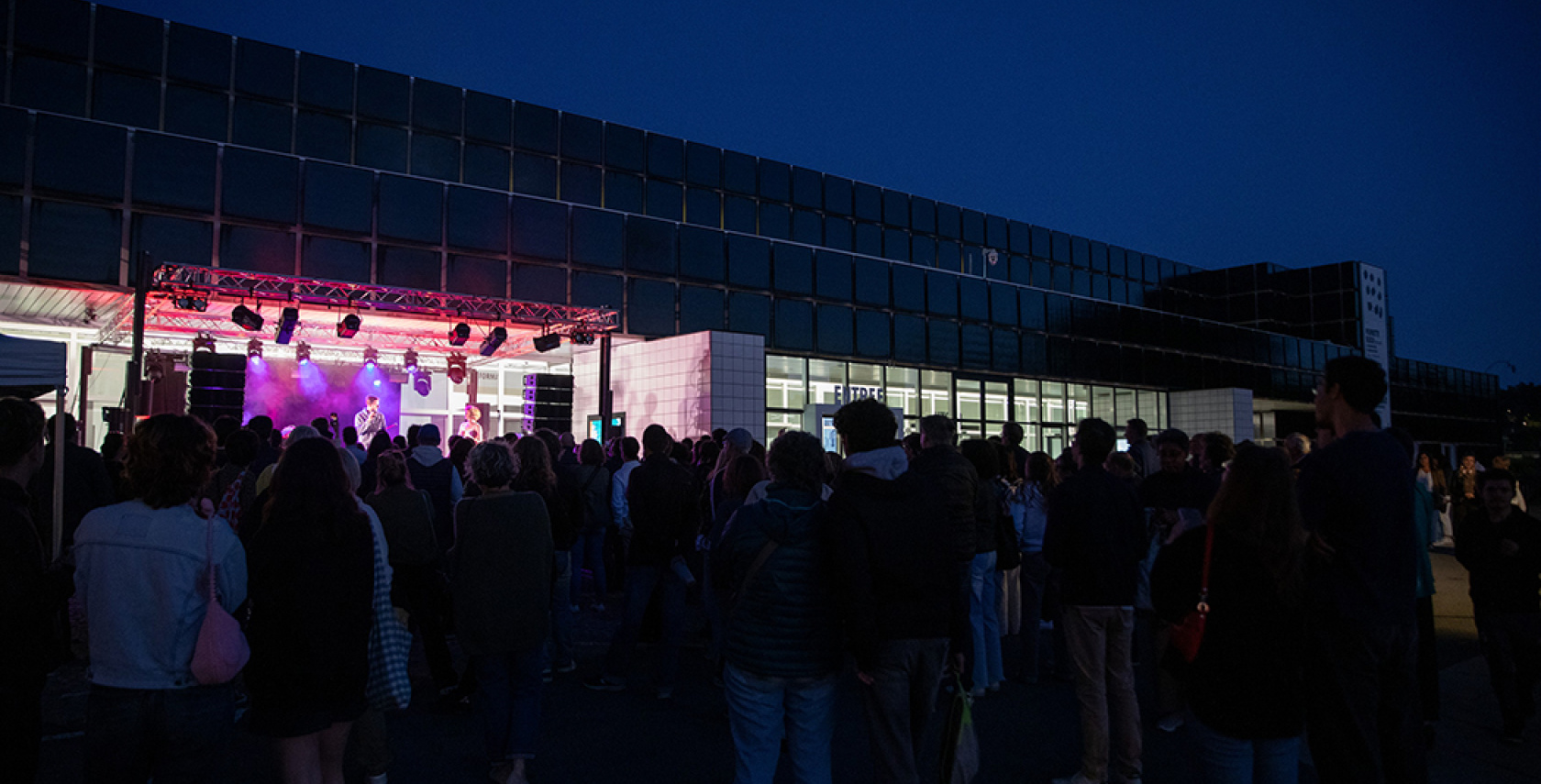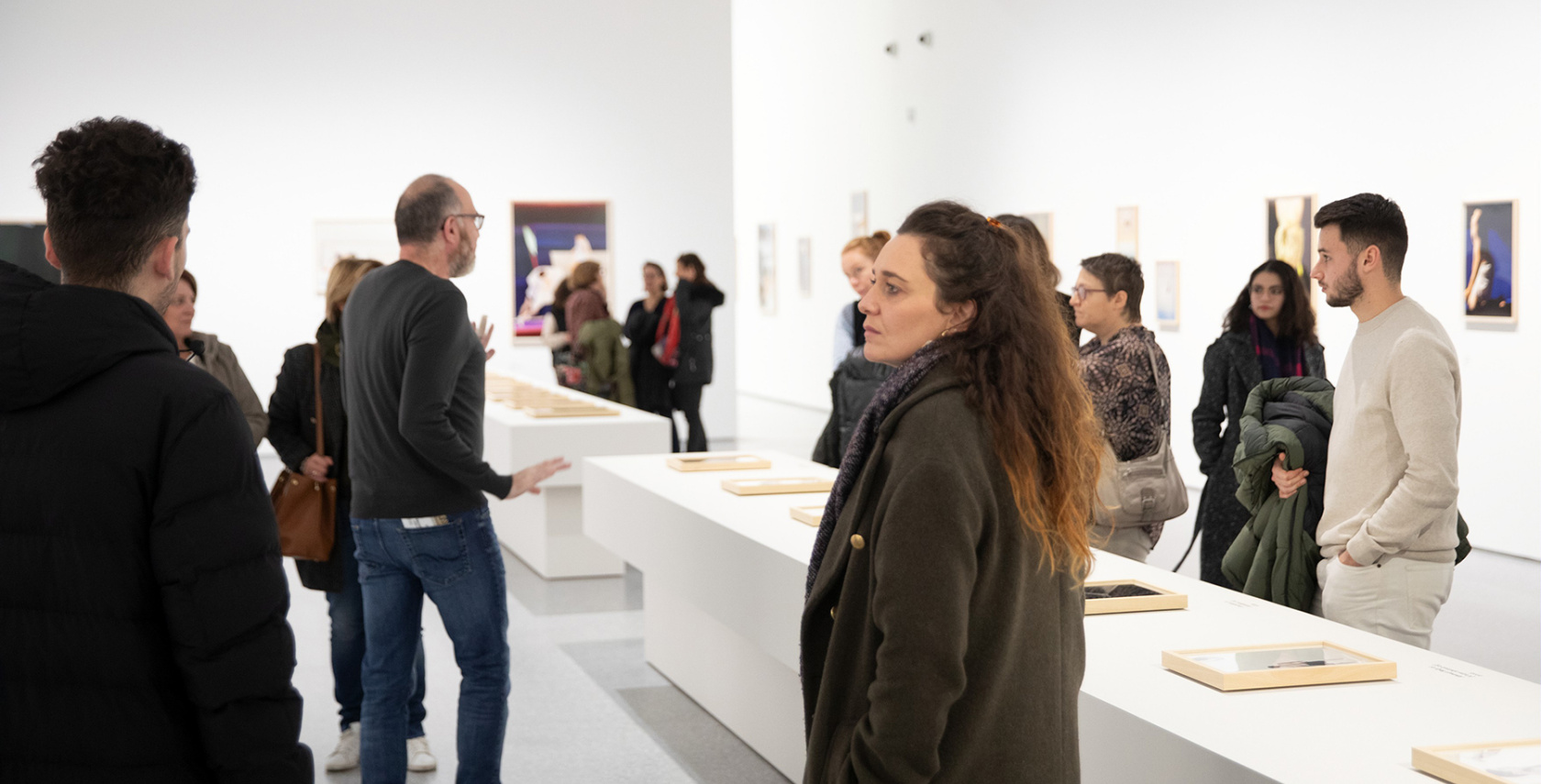The Musée d’art moderne et contemporain de Saint-Étienne Métropole (MAMC+) presents an ambitious program of temporary exhibitions with an international scope and showcases a collection of over 23,000 works, primarily spanning the 19th to the 21st centuries. In addition to its collection of modern and contemporary art - from Surrealism to Neo-Expressionism, Pop Art to Nouveau Réalisme, Minimalism to the most contemporary movements - the museum also holds a significant photography collection and one of France’s leading design collections.
“Through our acquisitions, exhibitions, and participation in the organization of symposia and debates, we have made a significant contribution to shedding light on the complex evolution of contemporary artistic practice.”Bernard Ceysson, « Projet et programme pour un Musée d’art moderne » (1982), Archives municipales de Saint-Étienne.
The Museum
One of the largest collections of modern and contemporary art in Europe
The museum’s holdings have been built up gradually since the second half of the 19th century, thanks to generous donors and bequests, as well as acquisitions by the City of Saint-Étienne and, since 2001, by Saint-Étienne Métropole. Half of the museum’s collection consists of donations and bequests from the State, patrons, discerning collectors, and generous artists. Among the major donors are Vicky Rémy, Jacqueline Brauner, François and Ninon Robelin, the Caisse des Dépôts et Consignations, and Liliane and Michel Durand-Dessert. The collection is further enriched by deposits from institutions such as the Musée national d’Art moderne – Centre Georges Pompidou, the Centre national des arts plastiques (Cnap), and the Institut d’art contemporain Villeurbanne/Rhône-Alpes.
The Design Collections
With around 2,000 objects and 600 drawings, the museum’s design collection is one of the most significant in France outside the capital. Enriched by numerous private donations, it reflects the history of the designed object while resonating with Saint-Étienne’s own industrial heritage. Two main directions emerge within the collection: one focused on everyday industrial design - such as household appliances and office accessories - and the other on signature furniture design from the 1950s to the 1980s (Pierre Paulin, René-Jean Caillette, Ray and Charles Eames, Charlotte Perriand, Serge Mouille).
The museum’s design collection is complemented by more than 130 objects on deposit from the Centre national des arts plastiques (Cnap). The MAMC+ also holds several archives from designers and studios - including Studio Totem, Michel Mortier, René-Jean Caillette, and Savinel & Rozé - affirming its role as a center for research in this field.
In close partnership with the Cité du design, the museum is leading the creation of the Galerie nationale du design, which will open in June 2026.
A Singular Architectural Identity
The MAMC+ was built on the northern edge of Saint-Étienne, based on plans by architect Didier Guichard. The building’s design is modern, minimalist, and economical. Its façade, clad in a black ceramic grid, pays tribute to the city’s mining heritage—a distinctive feature that inspired the museum’s current logo. The museum offers exceptional spaces: 3,000 square meters of exhibition areas and a 10-meter ceiling height, meeting the ambitious needs of artists and curators alike.
Our Mission
A Program Rooted in Its Territory and Open to All
The MAMC+’s cultural program accompanies its exhibitions and reflects the museum’s main scientific and artistic orientations. It takes the form of regular events - performances, screenings, talks, and study days - that allow visitors to explore artworks from multiple perspectives. Designed in close collaboration with the museum’s curatorial and education teams, the program offers a variety of formats combining hands-on experiences, reflection, and convivial encounters. It aims to create a vibrant rhythm around key moments at the museum, fostering dialogue between disciplines and experimenting with new approaches.
The MAMC+ maintains a strong relationship with its local community. It develops accessible and inclusive initiatives co-created with partners in the fields of education, social work, disability, and health. This approach seeks to make the museum a welcoming, diverse, and engaged space - one that nurtures lasting and shared cultural connections.
An International Museum
The Musée d’art moderne et contemporain de Saint-Étienne Métropole is regularly invited to lend works and collaborate on exhibitions throughout the year. Over 250 artworks are loaned annually to institutions in France, across Europe, and beyond. The museum also organizes exhibitions abroad based on its collections, welcomes traveling exhibitions, and co-produces and circulates its own shows internationally. Since 2019, the MAMC+ has been a member of FRAME (French and American Museum Exchange), a network linking French and American museums.
Our History
- 1833 : une collection de coquillages, animaux naturalisés, minéraux et médailles, léguée par M. Eyssautier, donne l’impulsion d’un premier musée, logé à l’hôtel de ville de Saint-Etienne.
- 1851 : la collection d’armes du Maréchal Oudinot ainsi que quelques tableaux, viennent s’ajouter à ce qui constitue un joli cabinet de curiosités.
- 1860 : inauguration du Palais des arts, les collections s’installent dans un bâtiment qui leur est dédié.
- 1890 : le Palais des Arts devient le Musée d’Art et d’Industrie, sous l’impulsion du conservateur Marius Vachon qui voit le musée comme une institution d’enseignement artistique et industriel en vue de fournir aux artistes et aux ouvriers les moyens pratiques de s’instruire professionnellement.
- 1947-1966 : Maurice Allemand dirige le Musée d’art et d’industrie et tourne sa politique d’acquisitions et d’expositions vers l’art moderne.
- 1967-1988 : Bernard Ceysson devient directeur du Musée d’art et d’industrie puis du Musée d’art moderne. Il oriente sa politique d’exposition et d’acquisition vers l’art contemporain. La collection du musée acquiert une dimension internationale et s’ouvre à la photographie et au design.
- 1987 : les collections sont séparées entre collections de rubans, d’armes et de cycles qui restent au Musée d’art et d’industrie, et collections de beaux-arts qui rejoignent le Musée d’art moderne. Ce dernier bénéficie d’importantes donations et d’un mécénat exceptionnel de Casino.
- 10 décembre 1987 : inauguration du Musée d’art moderne, l’un des premiers créés en région.
- 1998-2003 : Jacques Beauffet conforte l’enrichissement de la collection, ainsi que le développement de la bibliothèque Jean Laude et du fonds documentaire sur l’art du XXe siècle.
- 2003-2016 : Lóránd Hegyi, historien d’art d’origine hongroise, développe une politique d’acquisition et d’exposition tournée vers les artistes d’Europe de l’Est et d’Asie du Sud-Est.
- Octobre 2017 : Aurélie Voltz prend la direction du musée.
Today, the MAMC+ defines itself as:
- A bridge museum connecting ancient, modern, contemporary, and current art, showcasing both established artists and emerging contemporary talents, aiming to help visitors understand the evolution of art and the world.
- A cultural institution placing people at its center, committed to sustainable development, and fostering a new relationship between museum and public to support the pluralism of ideas.
- An internationally recognized cultural institution, serving its territory and local communities.
Le MAMC+ est pleinement impliqué dans ] Saint-Étienne Hors Cadre [ la démarche collective structurante qui porte l’offre touristique et culturelle de la métropole stéphanoise.
] Saint-Étienne Hors Cadre [ rassemble un collectif d’acteurs stéphanois engagés dans un mouvement créatif et inspirant, producteurs permanents de choses à découvrir, de moments à vivre et d’instants de partage. Un point commun anime le Musée et tous ces passionnés : l’envie d’inviter à appréhender le quotidien avec un regard non uniformisé, à faire un pas de côté, afin de redécouvrir tout ce qui nous entoure.




